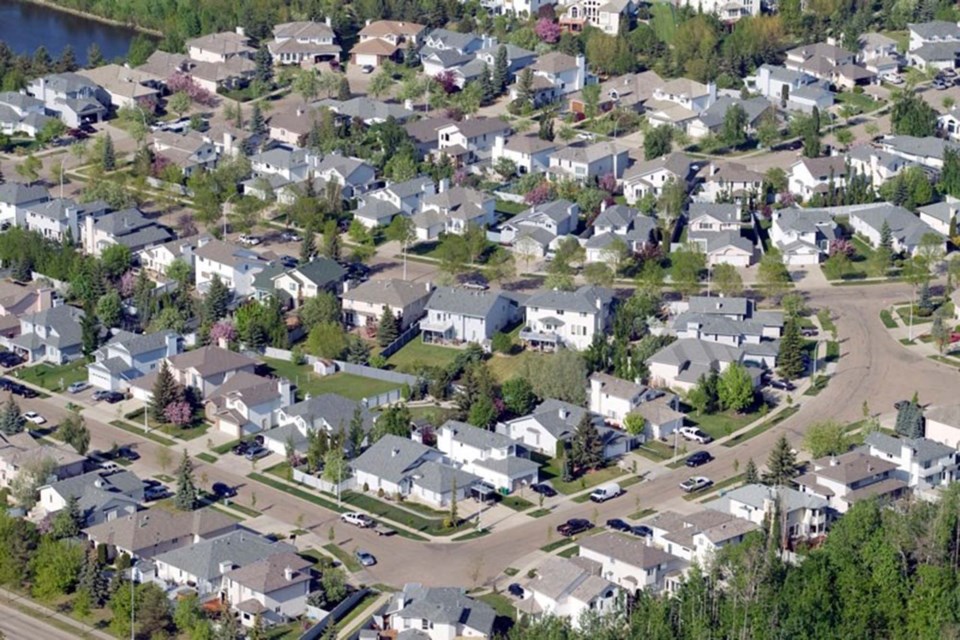The St. Albert Gazette will continue to dig into municipal funding challenges facing communities across North America in a series called Bridging the Municipal Funding Gap. This story is part of the series to help provide context to the struggle happening in St. Albert. The seventh story in the series will be released next week
Building small incremental projects in a city that is guided by grassroots needs rather than big projects built all at once can help a community maintain a good balance sheet, says a municipal expert.
Daniel Herriges, a senior editor for Strong Towns, a non-profit group that advocates for more sustainable development, said cities need to build incrementally to fund their needs without falling into a situation where they can’t afford to maintain their infrastructure.
“You adopt a strategy of incrementalism, where instead of doing things at a huge scale to a finished state, you look for what is the next best thing that we can do to meet a need to improve the quality of life in the community to respond to our residents' urgent struggles,” Herriges said.
“What is the next smallest thing we can do?”
Needs must bubble up from the bottom and a city must to listen to its residents, Herriges said, instead of the municipality acting as the implementation arm of the provincial or federal government.
Many municipalities across North America are facing a financing gap. Many can't afford their repair, maintenance, and replacement budgets.
Herriges said this is due to the way communities have been built in the post-Second-World-War era — spread out to accommodate cars rather than pedestrians, and using a funding model which relies on new residents and growth to fund the repair of existing infrastructure.
Often municipalities can get financing from other orders of government to fund projects, such as a provincial and federal grant for an arena, library, or road, but in the end the city may not have the revenue to repair, maintain, and replace the infrastructure, Herriges said.
Currently St. Albert, like many communities, is facing a repair, maintenance, and replacement (RMR) deficit. The city is considering forming a municipal energy corporation as an alternative source of revenue to stave off a 1.5-per-cent property-tax increase to make up for the current $16-million annual cash RMR shortfall.
To ensure cities can afford RMR, they should only build what they need, said Herriges, have the discipline to avoid the temptation to build big projects, and shift focus onto smaller, sustainable projects. Cities must ask themselves what is the next smallest thing they can build, Herriges said.
“I think that when you ask that sort of question, that naturally leads you away from the suburban pattern of development, and it leads you toward needing to thicken up your existing neighbourhoods — places where you have already committed the infrastructure and committed the services,” Herriges said.
“You need to allow them to evolve to a higher level of intensity.”
This doesn’t mean halting the development of a subdivision or business park at the edge of town, but municipalities must make it easier to rehabilitate old buildings in the centre of their communities that may be a bit dilapidated, where small changes can be made to allow for all areas of the community to meet the needs of its members.
These incremental builds are known as "small bets." This is how our ancestors built for centuries before the invention of the automobile.
These small projects are important, according to Strong Towns, because a community can't predict the future. The incremental changes allow for leaders to get feedback and pivot, adapt, and learn from experience rather than sudden intensification.
Incremental building can look like building single-family homes which can be turned into duplexes as the owners see fit, which could then eventually turn into small apartment buildings.
This method diversifies land ownership and allows for much "small bets" development.
The approach means that, if a few apartment buildings pop up, but there is no demand, no more apartment buildings will be built. If a community goes forward with larger bets, it would look like the entire block is being replaced with large apartment complexes offering units that can't be filled.
This approach to planning can be applied to how a city moves forward with everything, from bike lanes to re-imagining older buildings, Herriges said, and can help ensure a municipality is building infrastructure to meet the needs and demands of residents.




